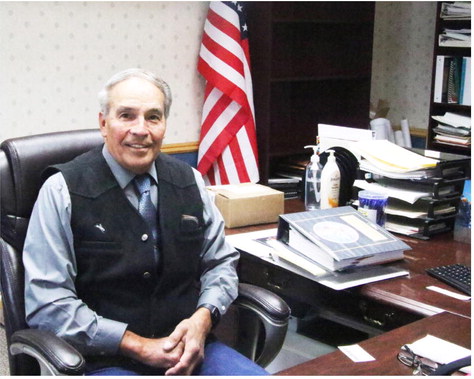Group Creates Resources For Teaching AI
With university faculty members grappling with how to responsibly integrate generative artificial intelligence tools into their teaching, two Montana State University librarians led a group of faculty to put together resources to help teachers explore using generative AI in the classroom in an ethical, intentional way.
The result is a collection of assignment templates for those who would like to use generative AI technology in teaching environments. The templates include resources like learning objectives, assessment suggestions and other notes. They are designed for use in college-level courses, although they may be customized, and they are open educational resources that are available for anyone, anywhere, to use for free.
With support from a 2024 Montana University System Teaching Scholars award, Jason Clark, professor and head of Research Optimization, Analytics and Data Services with the MSU Library, and Taylor Moorman, assistant professor and instructional technology librarian with the MSU Library, brought together a group of faculty who created assignment templates that teachers can use in classrooms. They also developed what are called model cards – summaries of machine learning models that provide context and background information for faculty and students who wish to explore using generative AI in a responsible way.
“At the center of a lot of the assignments is a model card (a practice borrowed from machine learning), which is a way of documenting the generative AI system,” Clark said. “Those cards ask questions like, ‘What is (the generative AI system’s) data set? Does it have bias? How are you using it responsibly? How was it trained?’ We’re really asking teachers to dig into technical questions about the technology that they’re using.”
By disclosing technical details and potential biases, the model cards empower informed discovery, reproducibility and responsible use, Moorman and Clark noted.
“Adapting model cards as a framework for assignment templates was foundational for responsible AI implementation within the assignments designed by each faculty member for their classrooms,” the two wrote in a description of the collection. “The resulting templates are concrete yet adaptable tools, each with a Creative Commons license, allowing faculty from any institution to utilize these tools in their unique environments.”
In addition to Moorman and Clark, eight other MSU faculty members from a range of departments and programs and an instructional designer took part. The group’s goal was to create a collection of materials that allow for the use of generative AI while considering factors of authority, credibility and responsible research.
For example, Paul Nugent, an assistant professor in the Department of Land Resources and Environmental Sciences and MSU’s Whitney and Elizabeth MacMillan Endowed Chair in Precision Agriculture, developed an assignment template for a precision agriculture class that introduces students to the concept of “pseudocode” — a detailed description of what a computer program or algorithm should do — and how it applies in computer programming.
Nugent’s assignment template notes that using generative AI tools will teach students valuable self-guided learning skills, help them evaluate AI-generated content, and demonstrate the iterative development of pseudocode. His template also aims to help students build confidence in integrating AI technologies to overcome programming hurdles.
Importantly, though, the assignment template also has guidelines to ensure that learning objectives are met, Clark noted. The guardrails specify not allowing AI to write the actual programming code; instead, the assignment has the students go back and build from pseudocode to create a software program themselves.
“We need students to learn, and part of that is slowing down and being intentional with technology, providing guardrails and questions, so they have to work through the process with the system itself,” Clark said.
Moorman noted the assignment templates put the students, not the AI tools, at the center of the learning experience.
For example, Jean Arthur- Sellegren, teaching professor in the Department of English, created a template on scholarly writing that has graduate students use an AI tool to complete a writing assignment for a nursing class. The students write their own version before making comparisons between the two.
“The assignment has them evaluate: What is (the tool) doing well, what is it not, how does it enhance my work? There’s a conversation about the tool and how it can be applicable,” Moorman said.
All the assignment templates set out to help students learn to use generative AI in a meaningful, transparent and ethical way while still meeting learning objectives, Moorman said.
The collection is available via MSU’s institutional repository, Scholarworks, at https://scholarworks.montana. edu/handle/1/19220. It is also available via the OER Commons at https://oercommons.org/ courses/an-interdisciplinary- collection-of-adaptable- generative-ai-assignments- and-model-cards.
 ...
...
